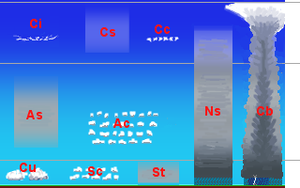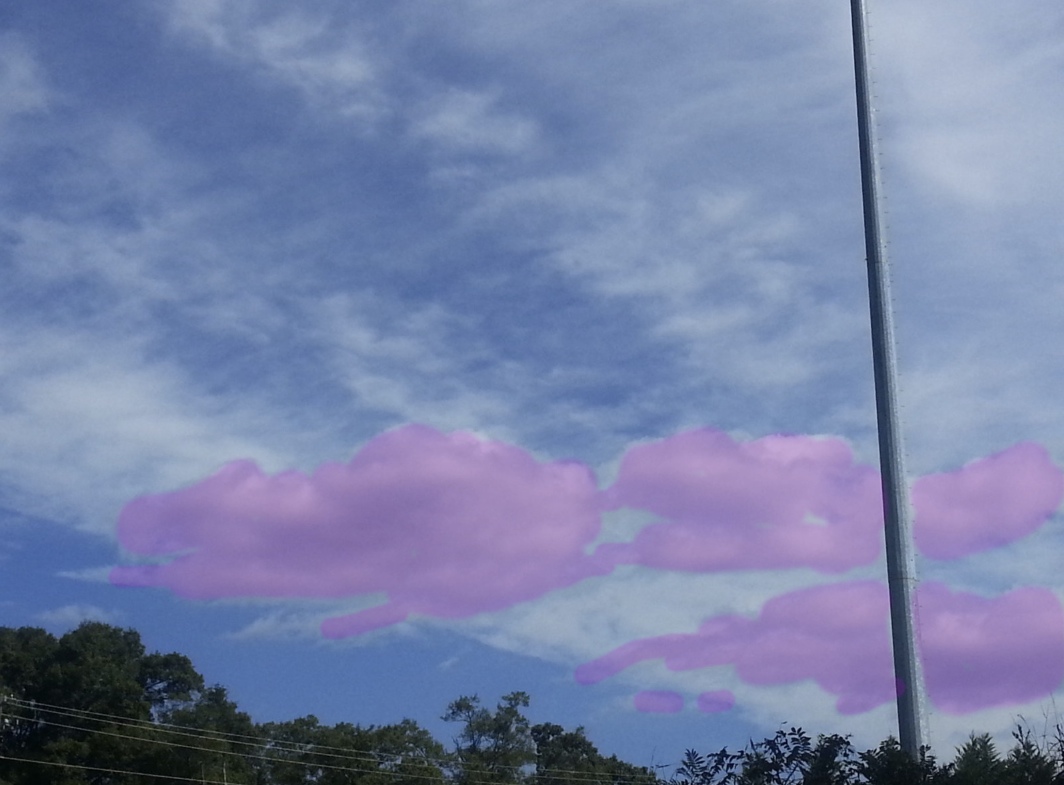For operational purposes, the National Weather Service uses the information from radiosondes in conjunction with equations in a computer model to determine the "convective condensation level" (CCL) - the height at which convective clouds like cumulus will form from buoyant lifting of the air (caused by parcels of air warmed by the Sun's heating of the ground), or the "lifting condensation level" (LCL) - the height at which status clouds will form resulting from mechanical lifting of the air.
A simple estimate of the LCL can be calculated from the following equation (found in Wikipedia):
LCL P = 120 (T-Td),
where P is the pressure at the height of the cloud base, T is the surface air temperature (in degrees F) and Td is the surface dewpoint (in degrees F).
CCL P > LCL P
The CCL is usually higher than the LCL because warm parcels of air that rise convectively are always warmer than their surroundings and therefore do not cool to saturation until above the height at which the temperature of the surrounding air equals the dewpoint. In other words, convective air parcels overshoot the LCL.
The height at which the LCL P occurs could be determined with the US or International "standard atmophere", but that will not always be very accurate, as the structure of the atmosphere is rarely just like the standard atmosphere, which is a reflection of average conditions. You can find standard atmosphere calculators on the Internet.
http://www.newton.dep.anl.gov/askasci/wea00/wea00331.htm







